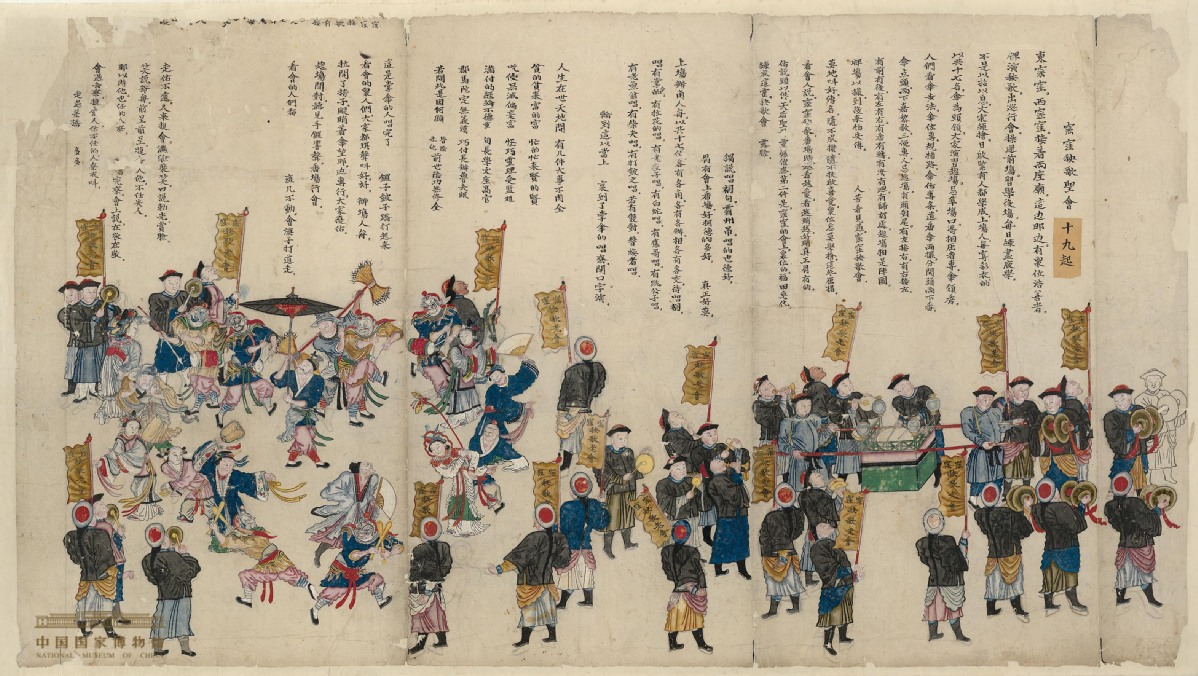 |
|
A section of Tianhou Palace in Tianjinon show. [Photo provided to China Daily] |
The Grand Canal, dating back to the fifth century BC, was the longest artificial waterway in the world. It consisted of three sections built in different periods to connect Beijing and Hangzhou, in East China's Zhejiang province, unifying the powerful northern and the fertile southern regions in ancient China.
Paddling for A Thousand Miles, an exhibition now underway at the National Museum of China in Beijing, navigates the excavation and development of the Grand Canal, which stretches some 2,700 kilometers.
The exhibition running until March 1 shows paintings, documents, artifacts and models, and reviews how construction of the Grand Canal facilitated technological advancements in water conservancy and transportation management. The waterway helped boost the economy in regions it ran through and cultural communications between North and East China, through which viewers can get a glimpse of the creativity and wisdom of ancient Chinese.